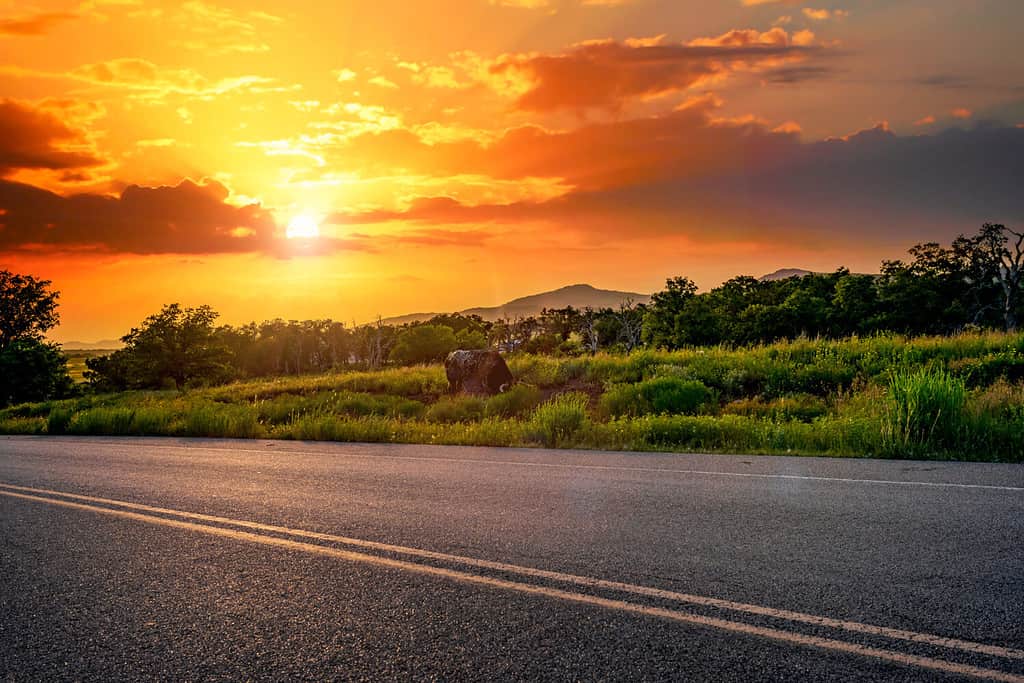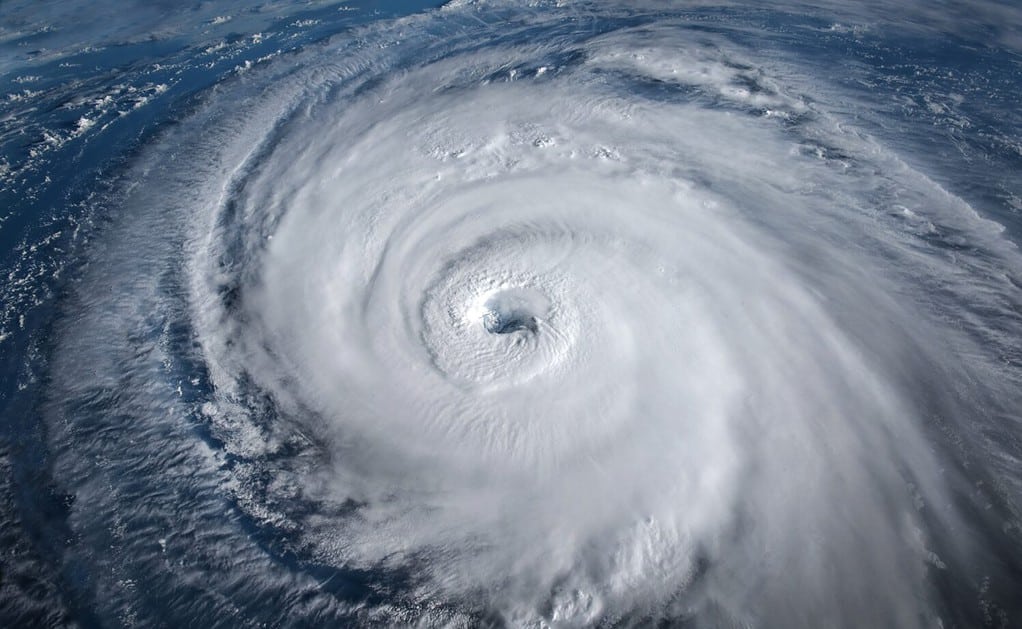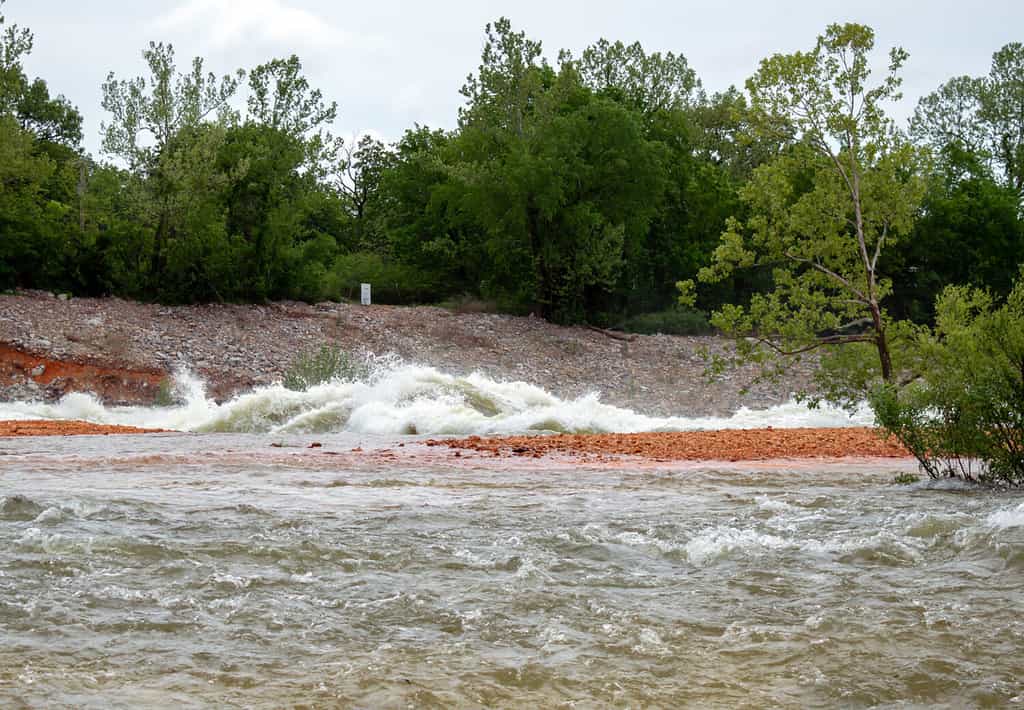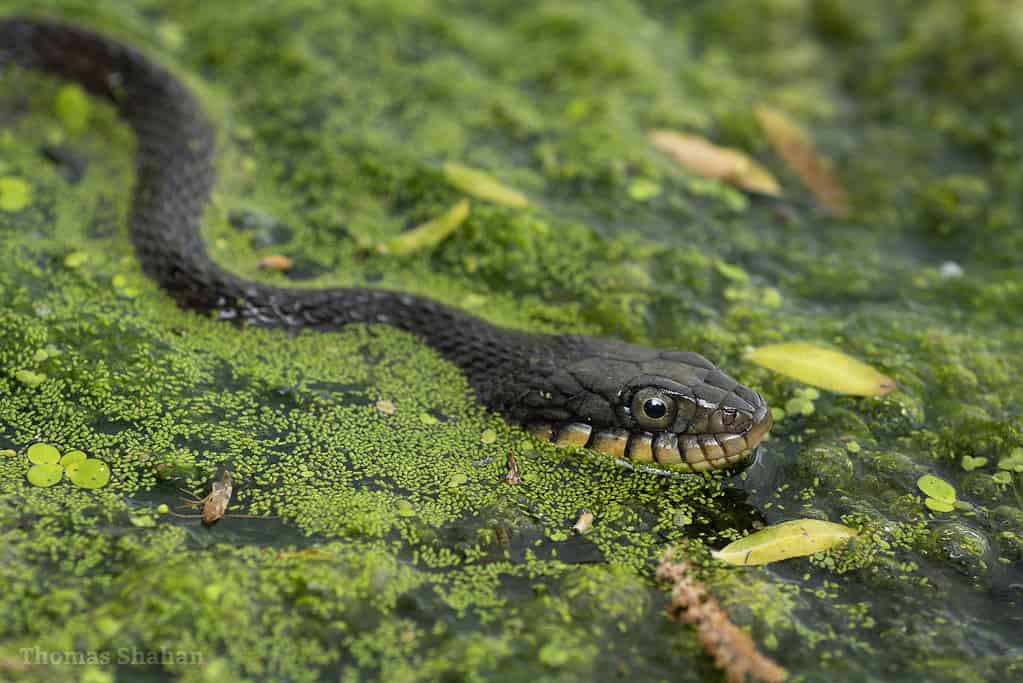Oklahoma, nestled in the heart of the United States, is known for its diverse landscapes, ranging from prairies and plains to rolling hills. However, it is not typically associated with hurricanes. While hurricanes are more commonly associated with coastal states, Oklahoma has experienced the impact of powerful storms in its history. Among them, one hurricane stands out as the most powerful to ever affect the state.
Understanding Hurricanes and Oklahoma’s Climate
Before diving into the specific hurricane, it is essential to grasp the climatic conditions and the role of hurricanes in Oklahoma. The state has a temperate climate with hot summers and mild winters. It is far from the Atlantic and Gulf coasts, which are the primary regions where hurricanes typically form. However, remnants of hurricanes can sometimes reach the state, bringing torrential rains, strong winds, and flash flooding.
Oklahoma’s inland location generally shields it from the full force of hurricanes. But this makes it susceptible to remnants of hurricanes that make landfall in the Gulf of Mexico and travel inland. As hurricanes weaken over land, they can still cause considerable damage. This is especially true for regions with already saturated soils or inadequate drainage systems.
Oklahoma’s climate plays a crucial role in determining its susceptibility to hurricanes. Although the state is located far from the Atlantic and Gulf coasts where hurricanes typically form, it can still be affected by the remnants of these powerful storms. Understanding the key climatic factors that contribute to Oklahoma’s vulnerability to hurricanes is essential for disaster preparedness and response efforts.
Moisture Transport in Hurricanes in Oklahoma
Hurricanes are known for their ability to draw vast amounts of moisture from warm ocean waters. These conditions fuel their development and intensification. When hurricanes make landfall and weaken, the moisture they carry can be transported far inland by atmospheric systems, such as low-pressure troughs or jet streams.
Oklahoma’s climate features a mix of weather patterns, including frontal systems and mid-latitude cyclones. These can interact with weakening hurricanes and draw their moisture into the state. This influx of moisture, combined with other weather systems, can lead to heavy rainfall and an increased risk of flash flooding. This is true especially in areas with poor drainage or already saturated soils.

Oklahoma generally experiences hot summers and mild winters, but hurricanes are uncommon for the state.
©Sarah Quintans/Shutterstock.com
Impact on Seasonal Weather Patterns
The remnants of hurricanes can also have implications for Oklahoma’s seasonal weather patterns. When hurricanes interact with atmospheric systems, they can influence weather conditions across larger regions, including the central United States.
For example, the moisture from weakening hurricanes can enhance the development of thunderstorms and rain systems over Oklahoma during certain times of the year. This can lead to more significant precipitation and increase the likelihood of severe weather events in the state.
La Niña and El Niño Effects
Oklahoma’s climate is also influenced by natural climate oscillations such as La Niña and El Niño. These phenomena occur in the equatorial Pacific Ocean and can have far-reaching impacts on global weather patterns.
During La Niña events, Oklahoma tends to experience drier and warmer conditions. This increases the risk of drought and enhances the potential for wildfires. In contrast, El Niño events often bring wetter and cooler conditions to the state.
La Niña and El Niño do not directly cause hurricanes. However, they can interact with atmospheric patterns and may influence the potential for hurricanes to impact the region indirectly. For instance, El Niño tends to create an environment that is less conducive to hurricane development in the Atlantic. This potentially reduces the likelihood of hurricanes reaching Oklahoma.
The Most Powerful Hurricane to Affect Oklahoma: Hurricane Carla
Hurricane Carla was a historic storm that made landfall in Texas in September 1961. Although Oklahoma is landlocked, Carla’s remnants managed to travel hundreds of miles inland. The hurricane left a huge trail of destruction in its wake and is still remembered.
Formation of Hurricane Carla
Carla originated as a tropical wave off the western coast of Africa in early September 1961. As this wave moved westward across the warm waters of the Atlantic Ocean, it encountered favorable conditions for development. Warm ocean waters, typically exceeding 80˚F (27˚C), provided the necessary energy to fuel the storm’s growth.
In addition to warm waters, Carla encountered low vertical wind shear, which allowed the storm’s structure to organize and intensify. Wind shear refers to the change in wind direction and speed with altitude. Low wind shear enables a hurricane to maintain a more symmetric and tightly wound structure, promoting further strengthening.
As Carla continued to gain strength, it transformed from a tropical wave into a tropical depression and then into a tropical storm. The storm’s sustained winds exceeded 74 mph (119 km/h), marking the transition from a tropical storm to a hurricane.

Hurricane Carla was a Category 5 on the Saffir-Simpson Hurricane Wind Scale, making it the strongest hurricane in Oklahoma to date.
©Triff/Shutterstock.com
Intensification in the Gulf of Mexico
As Carla continued its westward track, it entered the Gulf of Mexico. The Gulf is a region known for its warm waters and potential for rapid hurricane intensification. The warm waters provided a vast reservoir of energy for Carla, allowing the storm to continue strengthening.
Carla’s interaction with the Gulf’s warm waters and the relatively low wind shear enabled it to become a major hurricane. During this stage, it sustained winds exceeding 111 mph (179 km/h). It rapidly intensified to become a Category 5 hurricane on the Saffir-Simpson Hurricane Wind Scale. This indicates that it sustained winds of at least 157 mph (252 km/h).
Hurricane Landfall in Texas and Path toward Oklahoma
On September 11, 1961, Hurricane Carla made landfall near Port O’Connor, Texas, as a powerful Category 4 hurricane. The storm’s eye crossed the Texas coast, bringing a massive storm surge and destructive winds to coastal communities.
After making landfall, Carla’s remnants began to interact with the prevailing atmospheric conditions, which guided the storm’s path inland. At the time, a weather system in the central United States, known as a trough, was present. The trough acted as a conduit that steered Carla’s remnants northward, directing the storm’s moisture and energy into Oklahoma.
As Carla’s remnants traversed northward, the storm interacted with the jet stream, a fast-moving river of air in the upper atmosphere. The jet stream’s flow helped to propel the remnants farther inland, influencing the storm’s track toward Oklahoma.
Impact of Hurricane Carla on Oklahoma
After making landfall in Texas, Carla’s remnants continued to travel northward, impacting Oklahoma with heavy rains, strong winds, and flash flooding. The state experienced significant rainfall, leading to swollen rivers and creeks, exacerbating the flash flood risk in low-lying areas.
The impact of Hurricane Carla’s remnants on Oklahoma was significant, despite the state being located hundreds of miles inland from the Gulf of Mexico where the storm made landfall. The remnants of Carla traveled northward and unleashed a series of devastating effects on the state, leaving behind destruction and a human toll that underscored the need for disaster preparedness and response efforts in inland regions vulnerable to the impacts of powerful hurricanes.

Hurricanes in Oklahoma can result in heavy rains and flash floods which destroy communities.
©Diane079F/Shutterstock.com
Flash Floods and Heavy Rains due to Hurricane Carla in Oklahoma
One of the most immediate and profound impacts of Hurricane Carla on Oklahoma was the flash floods and heavy rainfall it brought to the state. The storm’s remnants carried a massive amount of moisture, which, upon reaching Oklahoma, resulted in torrential downpours that overwhelmed the region’s drainage systems.
Low-lying areas and communities along rivers and creeks were particularly vulnerable to flooding. Water levels rose rapidly, catching residents off guard and leaving little time to evacuate. The flash floods not only damaged homes and businesses but also washed out roads and bridges, making transportation and communication between communities challenging.
Infrastructure Damage due to Hurricane Carla in Oklahoma
The powerful winds associated with Carla’s remnants caused significant damage to Oklahoma’s infrastructure. Trees were uprooted, power lines were knocked down, and buildings were damaged or destroyed. The impact on power infrastructure resulted in widespread power outages, leaving many residents without electricity during and after the storm.
The destruction of roads and bridges hindered access to several regions, further complicating relief and recovery efforts. Emergency response teams faced difficulties reaching affected communities, which delayed aid and rescue operations.
Human Toll and Loss of Life due to Hurricane Carla in Oklahoma
The flash floods and destruction caused by Hurricane Carla’s remnants in Oklahoma resulted in a significant human toll. The sudden and intense flooding caught many residents by surprise, and the lack of preparedness exacerbated the impact. Numerous individuals were stranded in their homes, vehicles, or public spaces, requiring immediate rescue and assistance.
Tragically, Carla’s impact led to loss of life and injuries. The fatalities were a stark reminder of the devastating force of extreme weather events and the importance of preparedness and response measures to protect lives.
Economic Impact
The economic impact of Hurricane Carla on Oklahoma was substantial. The damage to infrastructure, homes, and businesses led to significant financial losses for individuals and communities. Agricultural sectors also suffered, as floodwaters destroyed crops and inundated farmland.
The cost of recovery and rebuilding strained local and state resources, prompting the need for federal assistance and disaster relief funds to support recovery efforts.
Lessons Learned and Preparedness
The impact of Hurricane Carla’s remnants on Oklahoma served as a critical learning experience for the state’s emergency management agencies and residents. It highlighted the need for improved disaster preparedness plans and enhanced public awareness about the potential impacts of hurricanes, even in landlocked states.
Since the storm, Oklahoma has taken significant steps to bolster its disaster preparedness and response capabilities. Emergency management agencies have refined their communication systems, ensuring timely dissemination of weather alerts and advisories. Officials have conducted community awareness campaigns to educate residents about the risks of flash floods and the importance of having emergency kits and evacuation plans.
Impact on Wildlife due to Hurricane Carla in Oklahoma
The impact of Hurricane Carla’s remnants on wildlife in Oklahoma was multifaceted and complex. Oklahoma does not typically experience hurricane activity. But the storm’s remnants brought torrential rains, strong winds, and flooding that affected natural habitats and wildlife across the state. The disruption caused by the hurricane highlighted the vulnerability of certain species and ecosystems to extreme weather events. It also provided valuable insights into the importance of conservation and preparedness for future storms.

Hurricanes can disrupt both forest and water habitats for animals, like the habitat of this water snake in Oklahoma.
Habitat Disruption
One of the most immediate impacts of Hurricane Carla on wildlife in Oklahoma was the disruption of natural habitats. The heavy rainfall and flash floods inundated low-lying areas and riverbanks, causing temporary or permanent changes to the landscape. Habitats such as wetlands, forests, and grasslands experienced alterations in water levels and vegetation. This affected the species that rely on these environments for shelter, nesting, and foraging.
Wetlands, which serve as critical breeding grounds and habitats for various species of birds, amphibians, and mammals, were particularly susceptible to the changes in water levels. Prolonged flooding could have led to loss of nesting sites and reduced food availability for these animals.
Impact on Aquatic Life
The excessive rains and flooding from Hurricane Carla’s remnants also had consequences for aquatic life in Oklahoma’s rivers and streams. The rapid rise in water levels may have displaced fish and other aquatic organisms from their natural habitats, forcing them to seek shelter in new areas. The change in water quality and the presence of debris could have also stressed fish populations, potentially leading to fish kills in some areas.
Additionally, the increased runoff from urban areas and agricultural lands may have introduced pollutants and sediment into water bodies, further impacting aquatic ecosystems and wildlife.
Displacement and Migration
The powerful winds and torrential rains of the hurricane may have disrupted the migration patterns of certain bird species. Migratory birds that passed through Oklahoma during the storm could have altered their routes or delayed their journey, affecting their breeding and feeding schedules.
Some land animals, such as small mammals and reptiles, might have been displaced from their habitats due to flooding and sought temporary shelter in residential areas or structures. This displacement could have increased interactions between wildlife and human populations, leading to potential conflicts.
Species Vulnerability
The impacts of Hurricane Carla’s remnants underscored the vulnerability of certain wildlife species in Oklahoma. Endangered or threatened species with limited habitats and small populations may have been more susceptible to the effects of habitat disruption and extreme weather events.
The destruction of vegetation and food sources during the storm could have put additional stress on certain species, making their populations more susceptible to declines.
Long-Term Recovery
The long-term impact of Hurricane Carla on wildlife in Oklahoma depended on the resilience and adaptability of species and ecosystems. Some wildlife populations might have rebounded relatively quickly as habitats recovered from the storm’s impacts. However, others could have experienced longer-lasting effects, especially if their habitats faced persistent threats or if the storm triggered a cascade of ecological changes.

Habitats can take a long time to recover from the impacts of hurricanes, like the Mountain Fork River At Beaver’s Bend State Park in Broken Bow, OK.
©Silvio Ligutti/Shutterstock.com
Conservation and Preparedness
The impact of Hurricane Carla on wildlife in Oklahoma highlighted the importance of conservation efforts to protect and restore natural habitats and wildlife populations. Conservation strategies that focus on preserving and enhancing the resilience of ecosystems can play a vital role in helping wildlife rebound after extreme weather events.
Furthermore, it emphasized the need for preparedness and proactive management to mitigate the impact of future storms. Implementing measures that promote habitat connectivity, reduce human-wildlife conflicts, and enhance the overall resilience of ecosystems can better prepare Oklahoma’s wildlife to withstand the effects of extreme weather events.
While Oklahoma may not be a coastal state, it is not immune to the effects of hurricanes, especially when powerful storms like Hurricane Carla’s remnants reach inland. The devastating impact of Carla’s remnants on Oklahoma in 1961 serves as a reminder of the need for disaster preparedness and response efforts in every region, regardless of their distance from the coast.
By learning from past experiences like Hurricane Carla, Oklahoma has continued to improve its disaster preparedness and response plans to better protect its residents and infrastructure from the impacts of extreme weather events. As climate change continues to influence the intensity and frequency of hurricanes, the lessons from Carla’s remnants remain as crucial as ever to build resilience and ensure the safety and well-being of the people of Oklahoma.
Thank you for reading! Have some feedback for us? Contact the AZ Animals editorial team.








